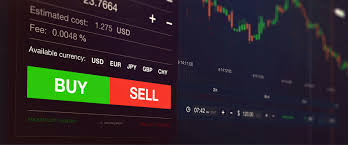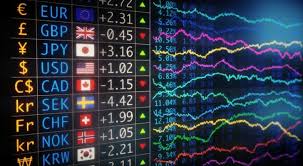Understanding Forex Trading A Comprehensive Definition 1635226454

What is Forex Trading?
Forex trading, also known as foreign exchange trading or currency trading, is the act of buying and selling currencies in the foreign exchange market with the aim of making a profit. Unlike traditional stock markets, forex operates 24 hours a day across various global financial centers, allowing for continuous trading. This decentralized market is the largest and most liquid financial market in the world, with a daily trading volume exceeding $6 trillion. forex trading definition Best Platforms for Trading are essential for entering this dynamic market.
Key Terminology in Forex Trading
To understand forex trading, it’s crucial to familiarize yourself with some key terms:
- Currency Pair: In forex trading, currencies are traded in pairs, such as EUR/USD, where one currency is quoted against another. The first currency is known as the base currency, while the second is referred to as the quote currency.
- Pip: A pip is a unit of measurement for the price movement of a currency pair. It is usually the fourth decimal place in most pairs, except for Japanese yen pairs where it’s the second decimal place.
- Leverage: Leverage allows traders to control a larger position size with a smaller amount of capital. For example, with a leverage of 100:1, a trader needs to deposit only 1% of the total position size.
- Spread: The spread is the difference between the bid price (the price at which you can sell a currency) and the ask price (the price at which you can buy a currency). It represents the cost of trading a currency pair.
The Mechanics of Forex Trading

The forex market consists of various participants, including banks, financial institutions, corporations, governments, and individual traders. The market operates through a network of electronic communications and encompasses several global financial centers. Here’s a simplified breakdown of how forex trading works:
- Opening a Trading Account: To start trading forex, you first need to open an account with a brokerage firm. This account serves as your trading platform where you execute buy and sell orders.
- Choosing a Currency Pair: After funding your trading account, you can choose a currency pair to trade. Based on your analysis of the market (technical or fundamental), you decide whether to buy or sell the pair.
- Executing a Trade: Once you decide on the direction you believe the market will move, you execute the trade. If you think the base currency will appreciate against the quote currency, you would ‚buy‘ the pair. Conversely, if you anticipate a depreciation, you would ‚sell‘ the pair.
- Monitoring Your Trade: After placing a trade, continuously monitor its performance. Factors such as economic indicators, geopolitical events, and market sentiment can impact currency prices.
- Closing the Trade: You can choose to close your trade at any time. Profits or losses are realized when you close the position, which occurs based on the difference between your entry and exit prices.
Analysis Techniques in Forex Trading
Successful forex trading often relies on analysis. Traders typically use two primary types of analysis:
1. Technical Analysis
This approach involves analyzing price charts and using technical indicators to forecast future price movements. Traders look for patterns, trends, and signals to make informed trading decisions. Common tools in technical analysis include moving averages, Relative Strength Index (RSI), and Fibonacci retracement levels.

2. Fundamental Analysis
Fundamental analysis focuses on understanding the underlying economic factors that affect currency values. This analysis considers economic indicators such as interest rates, inflation rates, employment statistics, and geopolitical events. Traders assess how these factors impact supply and demand for currencies, helping them make longer-term trading decisions.
The Risks Involved in Forex Trading
While forex trading presents opportunities for profit, it also involves substantial risks. Here are some key risks every trader should consider:
- Market Risk: Currency prices can fluctuate rapidly due to various factors, leading to potential losses.
- Leverage Risk: While leveraging can amplify profits, it can also magnify losses, leading to the risk of losing the entire investment.
- Liquidity Risk: In times of high volatility or during major economic announcements, a trader may find it difficult to execute trades at desired prices.
- Counterparty Risk: This risk refers to the possibility that the broker or financial institution may default on its obligations, which can lead to losses for the trader.
Conclusion
Forex trading offers a unique opportunity for individuals and institutions to engage in the global currency market. Understanding the fundamentals, coupled with effective analysis techniques, can significantly improve a trader’s chances of success. However, it is crucial to approach forex trading with caution, adopting a sound risk management strategy to safeguard one’s investment. As the market continues to evolve, traders must stay informed about new developments and adjust their strategies accordingly to stay competitive.